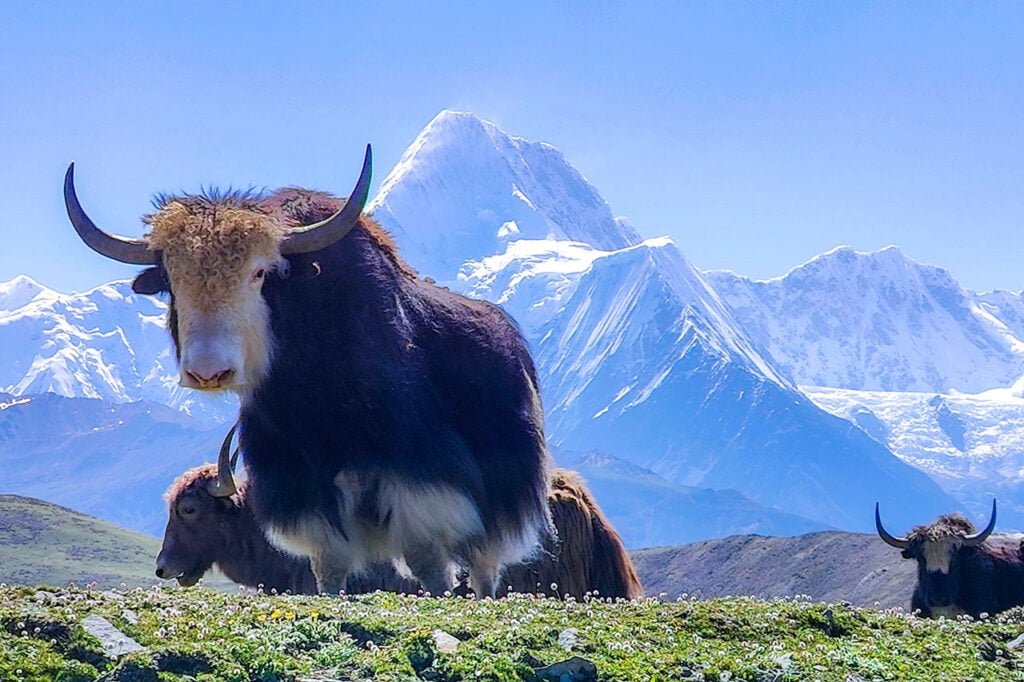Tibet, often dubbed the “Roof of the World,” is a land of breathtaking landscapes, spiritual significance, and unique geographical features. This comprehensive guide delves into the intricate geography of Tibet, exploring its towering mountains, vast plateaus, vital rivers, and diverse ecosystems. Whether you’re a geography enthusiast, a traveler planning a Tibet tour, or simply curious about this extraordinary region, this article provides a detailed overview of Tibet’s geographical wonders.

Unveiling the Roof of the World: Tibet
Tibet, officially the Tibet Autonomous Region of China, is situated in Central Asia. Its average elevation of over 4,500 meters (14,800 feet) has earned it the moniker “Roof of the World.” This high altitude, coupled with the surrounding mountain ranges, creates a unique environment that has shaped Tibet’s climate, culture, and history. Understanding the geography of Tibet is crucial for appreciating its unique character and the challenges faced by its inhabitants.
The Tibetan Plateau: The World’s Highest and Largest Plateau
At the heart of Tibet lies the Tibetan Plateau, the world’s highest and largest plateau. This vast expanse of land covers approximately 2.5 million square kilometers and is characterized by its high altitude, arid climate, and sparse vegetation. The plateau’s formation is a result of the collision of the Indian and Eurasian tectonic plates, a process that continues to shape the region’s landscape.
The Majestic Himalayas: A Natural Barrier
The Himalayas, the world’s highest mountain range, form a formidable barrier along Tibet’s southern border, separating it from the Indian subcontinent. This iconic mountain range is home to Mount Everest (8,848.86 meters or 29,031.7 feet), the highest peak above sea level. The Himalayas play a crucial role in Tibet’s climate, blocking moisture-laden monsoon winds from the south and contributing to the region’s arid conditions.
Other Mountain Ranges: Kunlun, Transhimalaya, Karakoram
Besides the Himalayas, Tibet is surrounded by other significant mountain ranges, including:
- The Kunlun Mountains: Located to the north of the Tibetan Plateau, the Kunlun Mountains separate Tibet from the Taklamakan Desert.
- The Transhimalaya (Gangdise Range): Running parallel to the Himalayas, the Transhimalaya is a significant mountain range in western Tibet.
- The Karakoram Range: Located in the westernmost part of Tibet, bordering Pakistan and India, the Karakoram Range is known for its high peaks and extensive glaciers.
Rivers of Life: The Source of Asia’s Great Rivers
Tibet is the source of many of Asia’s major rivers, including:
- The Brahmaputra River (Yarlung Tsangpo): Originating from the Chemayungdung Glacier, the Brahmaputra flows eastward through southern Tibet before entering India and Bangladesh.
- The Indus River (Senge Khabab): Rising in western Tibet near Lake Manasarovar, the Indus flows northwest through India and Pakistan.
- The Mekong River (Lancang Jiang): Originating in the eastern Tibetan Plateau, the Mekong flows through Southeast Asia.
- The Yangtze River (Chang Jiang): The longest river in Asia, the Yangtze originates from the glaciers of the Tanggula Mountains in central Tibet.
These rivers are vital sources of freshwater for millions of people across Asia and play a crucial role in the region’s ecosystems.
Sacred Lakes: Gems of the Tibetan Plateau
Tibet is dotted with numerous high-altitude lakes, many of which are considered sacred in Tibetan Buddhism. Some of the most notable lakes include:
- Namtso Lake: One of the highest saltwater lakes in the world.
- Yamdrok Lake: A stunning turquoise lake surrounded by snow-capped mountains.
- Lake Manasarovar: A sacred lake revered by both Buddhists and Hindus.
These lakes contribute to the beauty of the Tibetan landscape and are important habitats for various species of wildlife.
Climate of Tibet: Harsh Conditions at High Altitude
Tibet’s high altitude and surrounding mountains create a harsh climate characterized by:
- Low temperatures: Average temperatures are well below freezing for much of the year.
- Low precipitation: Most of Tibet receives very little rainfall.
- Intense solar radiation: Due to the thin atmosphere, solar radiation is very strong.
- Strong winds: The plateau experiences strong winds, especially in the winter.
- Large daily temperature variations: Temperatures can fluctuate dramatically between day and night.
This challenging climate has influenced the development of unique adaptations in both the flora and fauna of Tibet.
Flora and Fauna: Adapting to Extreme Conditions
Despite the harsh climate, Tibet is home to a variety of plant and animal life that have adapted to the extreme conditions. Some notable species include:
- Snow Leopard: A rare and elusive predator.
- Tibetan Antelope (Chiru): Known for its fine wool (shahtoosh).
- Wild Yak: A large bovine adapted to high altitudes.
- Black-necked Crane: A rare and endangered bird.
The preservation of Tibet’s unique biodiversity is a crucial environmental challenge.
The Changtang Plateau: A Vast Expanse of Grassland
The Changtang Plateau, located in northern and western Tibet, is a vast expanse of high-altitude grassland. This region is home to nomadic communities who herd yak and sheep.
Altitude Sickness: A Challenge for Visitors
Altitude sickness is a common concern for visitors to Tibet due to the high altitude. Symptoms can include headache, nausea, fatigue, and shortness of breath. Acclimatization is crucial for preventing altitude sickness.
The Significance of Tibet’s Geography
Tibet’s geography has profoundly influenced its history, culture, and development. The high altitude and rugged terrain have historically isolated Tibet, contributing to the preservation of its unique cultural traditions. The region’s natural resources, including water and minerals, are of great importance to both Tibet and the surrounding areas.
Exploring Tibet: A Journey to the Roof of the World
For those planning a Tibet tour, understanding the region’s geography is essential. From the majestic Himalayas to the sacred lakes and vast plateaus, Tibet offers a unique and unforgettable travel experience.
The geography of Tibet is a defining feature of this extraordinary region. Its towering mountains, vast plateaus, and unique climate create a landscape of stunning beauty and ecological significance. Exploring the geography of Tibet provides a deeper understanding of its natural environment, cultural heritage, and strategic importance.

